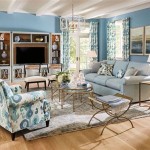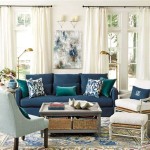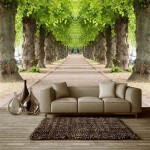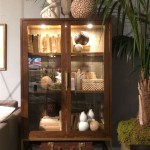How To Make Things To Decorate Your Room
Room decoration offers an opportunity to express individual style and create a personalized environment. Instead of relying solely on commercially available decorations, individuals can engage in crafting their own decorative items, resulting in unique and cost-effective enhancements to their living space. This article will provide a comprehensive guide on creating various decorations, categorized by skill level and material availability. These projects aim to offer inspiration and practical instructions for transforming a room with handmade items.
Repurposing Materials for Decorative Objects
One of the most accessible and environmentally conscious approaches to room decoration involves repurposing existing materials. Items frequently discarded can be transformed into functional and aesthetically pleasing pieces. This method promotes sustainability while allowing for creative expression and personalized designs.
Glass Jar Transformations: Commonly discarded glass jars, such as those used for food storage, can be transformed into various decorative items. Thoroughly cleaned jars can be painted, decoupaged, or wrapped with twine or fabric to create vases, candle holders, or storage containers. For example, a simple mason jar can be painted with acrylic paints in pastel colors and adorned with floral motifs to create a rustic-chic vase. Alternatively, wrapping a jar with jute twine and securing it with hot glue results in a textured candle holder. The opening of the jar can be embellished with lace or ribbon for added detail. Furthermore, these jars can be filled with fairy lights to create ambient lighting.
Fabric Scrap Projects: Fabric scraps, often left over from sewing projects, can be utilized in numerous decorative applications. These scraps can be pieced together to create patchwork quilts, pillow covers, or wall hangings. Smaller scraps can be used to embellish picture frames, lampshades, or other existing decorative items. A simple project involves creating fabric-covered boxes for storage. A plain cardboard box can be covered with fabric scraps adhered with fabric glue, creating a visually appealing and functional storage solution. Another option is to create fabric garlands. Scraps of fabric can be cut into strips and tied onto a length of twine or ribbon, creating a colorful and whimsical garland to hang across a wall or window.
Paper Crafts: Paper, whether it be recycled newspapers, magazines, or decorative paper, provides a versatile medium for crafting decorative items. Paper can be used to create origami sculptures, paper flowers, or decorative garlands. A particularly effective technique involves creating paper chandeliers. Using sturdy paper or cardstock, geometric shapes can be cut and assembled to form a three-dimensional chandelier. These chandeliers can be suspended from the ceiling or used as table centerpieces. Paper flowers, another simple yet elegant option, can be created using various folding and cutting techniques. These flowers can be arranged in vases, used to decorate picture frames, or incorporated into larger floral arrangements. Furthermore, paper can be used to create personalized wall art by framing interesting patterns, typography, or abstract designs.
Creating Wall Art and Display Pieces
Walls provide a blank canvas for expressing creativity and enhancing the aesthetic appeal of a room. Handmade wall art and display pieces add a personal touch and can transform a plain wall into a focal point. Several techniques and materials can be used to create unique and eye-catching wall decorations.
String Art: String art involves creating designs by wrapping colored string around nails hammered into a wooden board. This technique allows for intricate geometric patterns, silhouettes, or even word art. The process begins with sketching the desired design onto the wooden board. Nails are then hammered along the outline of the design, spaced evenly to provide anchoring points for the string. Colored string or yarn is then wrapped around the nails, creating a web of lines that form the desired image. Different colors and thicknesses of string can be used to add depth and dimension to the artwork. String art offers a customizable and visually striking way to personalize a wall.
Painted Canvas Art: Creating painted canvas art allows for complete freedom of expression. Individuals can explore different painting techniques, color palettes, and subject matter to create artwork that reflects their personal style. Abstract art, landscape paintings, or even simple geometric designs can be created on canvas using acrylic paints, oil paints, or even mixed media. For beginners, simple techniques such as color blocking or splatter painting can be used to create visually appealing abstract art. More experienced artists can explore more complex techniques such as impasto, glazing, or layering to create depth and texture. Painted canvases can be framed or hung directly on the wall, adding a personalized touch to the room.
Photo Displays: Displaying photographs is a classic way to personalize a room and showcase cherished memories. Instead of simply placing photographs in frames, creative photo display techniques can be used to create visually interesting arrangements. One option is to create a photo wall using a variety of frames in different sizes and styles. The frames can be arranged in a grid pattern, a cascading arrangement, or a more free-form design. Another option is to create a photo garland by clipping photographs onto a string or ribbon using clothespins. This garland can be hung across a wall or window, creating a whimsical and personalized display. Furthermore, photographs can be transferred onto wooden blocks or canvas using image transfer techniques, creating unique and personalized art pieces.
Crafting Decorative Accessories and Textiles
Decorative accessories and textiles play a crucial role in adding texture, color, and personality to a room. Handmade accessories and textiles allow for customization and provide an opportunity to create unique pieces that complement the overall decor. From pillows and cushions to curtains and rugs, various techniques can be employed to craft decorative items that enhance the aesthetic appeal of a room.
Pillow and Cushion Covers: Sewing pillow and cushion covers is a relatively simple project that allows for customization in terms of fabric choice, color, and pattern. Using basic sewing skills, individuals can create pillow covers from various fabrics such as cotton, linen, velvet, or even repurposed clothing. The covers can be embellished with embroidery, appliqué, or decorative trim to add visual interest. Different shapes and sizes of pillows can be created to add variety to the room. For example, a set of throw pillows in coordinating colors and patterns can be placed on a sofa or bed to create a cohesive and inviting look. Furthermore, decorative buttons, zippers, or ties can be added to the pillow covers to enhance their functionality and aesthetic appeal.
Curtains and Window Treatments: Handmade curtains and window treatments offer a personalized alternative to store-bought options. Using fabric of choice, individuals can create curtains that perfectly match the color scheme and style of their room. Simple techniques such as hemming and gathering can be used to create basic curtains. More advanced sewing skills can be used to create more elaborate designs, such as lined curtains, pleated curtains, or curtains with decorative valances. Additionally, alternative window treatments such as roman shades, roller shades, or fabric panels can be created using basic sewing and construction techniques. The fabric can be embellished with embroidery, stenciling, or fabric paint to add visual interest. Handmade curtains and window treatments can significantly enhance the aesthetic appeal and functionality of a room.
Rugs and Floor Coverings: Creating rugs and floor coverings is a more challenging but rewarding project that can significantly transform the look and feel of a room. Simple rugs can be created using techniques such as braiding, crocheting, or knotting. Braided rugs can be created by braiding strips of fabric together and then coiling and stitching the braid to form a circular or oval rug. Crocheted rugs can be created using thick yarn or even recycled t-shirt material. Knotted rugs, such as rag rugs, can be created by tying knots of fabric onto a mesh backing. More advanced rug-making techniques involve weaving or tufting. These techniques require specialized equipment and skills but allow for the creation of intricate and durable rugs. Handmade rugs and floor coverings add warmth, texture, and personality to a room, creating a cozy and inviting atmosphere.

Wall Art 5 Ways To Decorate Your Room With Photos Girlslife

Pin On Beautiful Bedroom Ideas
Ways To Make Your Home Cozy While Self Isolating For Coronavirus

Problems With Making Your Room Aesthetic Small Can T Paint

Handmade Things To Decorate Your Room With Diy And Crafts Sewing Decor Pencil

How To Decorate Your Room With Things You Already Have

Accessorize A Room With These 10 Things Stonegable

85 Bedroom Ideas How To Decorate A Stunning

How To Decorate Your Al Liz Marie Blog
Decorate Your Living Room On A Low Budget 5 Quick Ideas Sass
Related Posts







